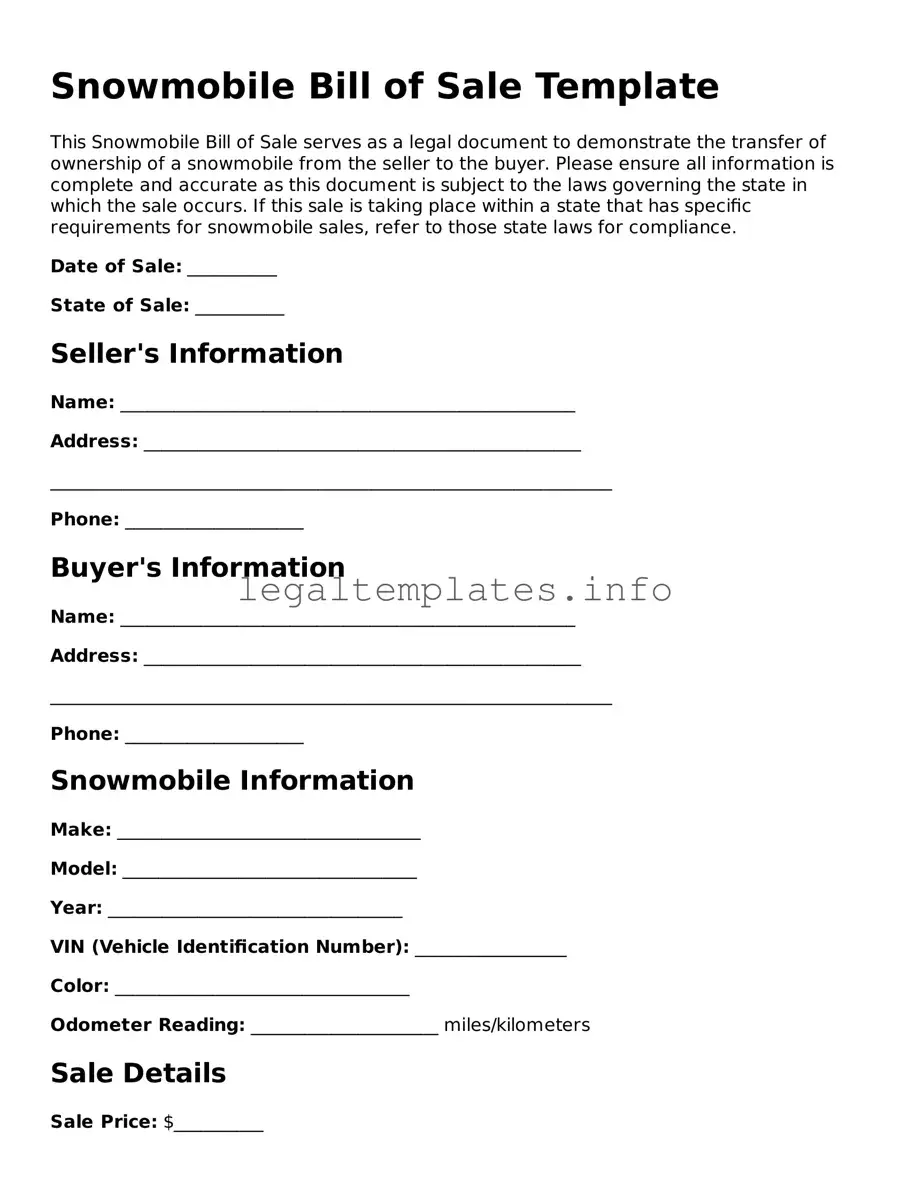Snowmobile Bill of Sale Template
This Snowmobile Bill of Sale serves as a legal document to demonstrate the transfer of ownership of a snowmobile from the seller to the buyer. Please ensure all information is complete and accurate as this document is subject to the laws governing the state in which the sale occurs. If this sale is taking place within a state that has specific requirements for snowmobile sales, refer to those state laws for compliance.
Date of Sale: __________
State of Sale: __________
Seller's Information
Name: ___________________________________________________
Address: _________________________________________________
_______________________________________________________________
Phone: ____________________
Buyer's Information
Name: ___________________________________________________
Address: _________________________________________________
_______________________________________________________________
Phone: ____________________
Snowmobile Information
Make: __________________________________
Model: _________________________________
Year: _________________________________
VIN (Vehicle Identification Number): _________________
Color: _________________________________
Odometer Reading: _____________________ miles/kilometers
Sale Details
Sale Price: $__________
Payment Method: _____________________________________________
Specific Terms of Sale (if any):
____________________________________________________________________
____________________________________________________________________
This document affirms that the Seller has the legal right to sell the snowmobile and certifies that the information provided about the snowmobile is accurate to the best of the Seller's knowledge. The Buyer accepts the snowmobile "as is," acknowledging all the details specified by the Seller, with no warranty expressed or implied outside of what is written within this Bill of Sale.
Acknowledgments
The undersigned Seller and Buyer both agree to the terms and conditions of the sale as described above. This agreement is binding upon both parties, their heirs, assigns, and successors. The transfer of ownership becomes official upon both parties' signatures and the date listed.
Signatures
Seller's Signature: ___________________________ Date: __________
Buyer's Signature: ___________________________ Date: __________
